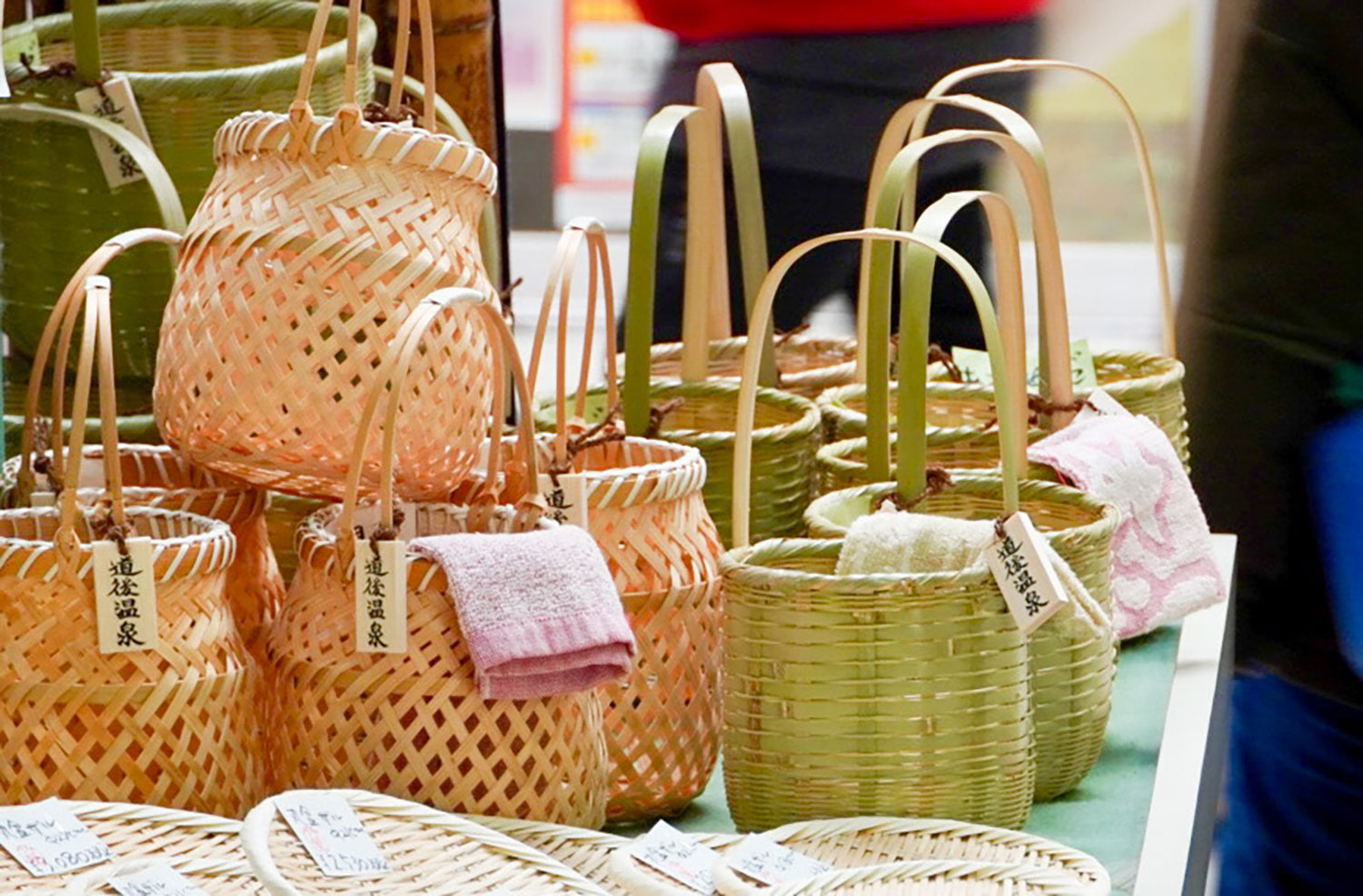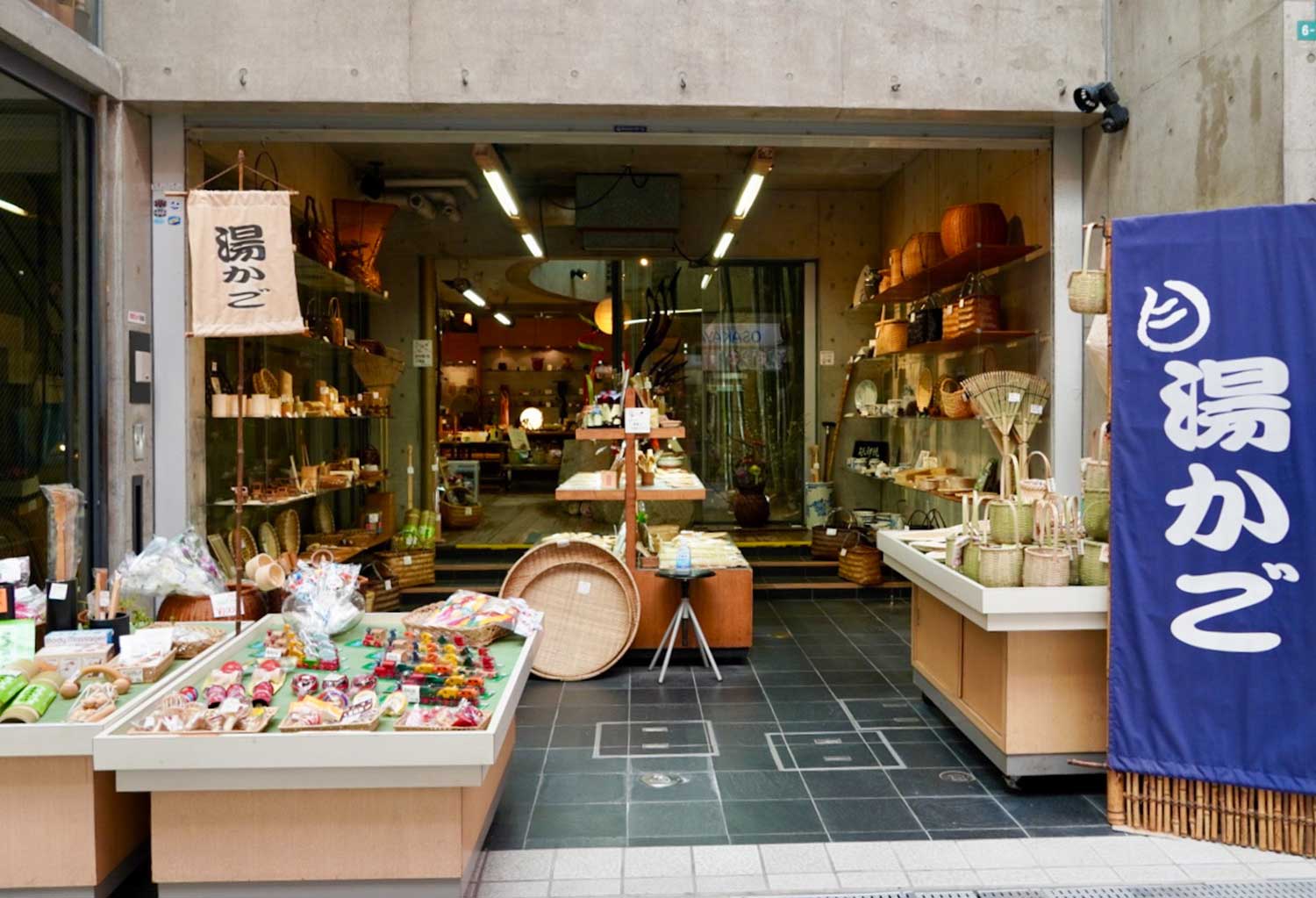
Forest

Tradition

Community
Creating Bamboo Baskets into Local Specialties via a Style Unique to Hot Spring Towns
Tourist destination culture and scenery developed via souvenir stores and bamboo crafts
Takeya
(Ehime Prefecture)
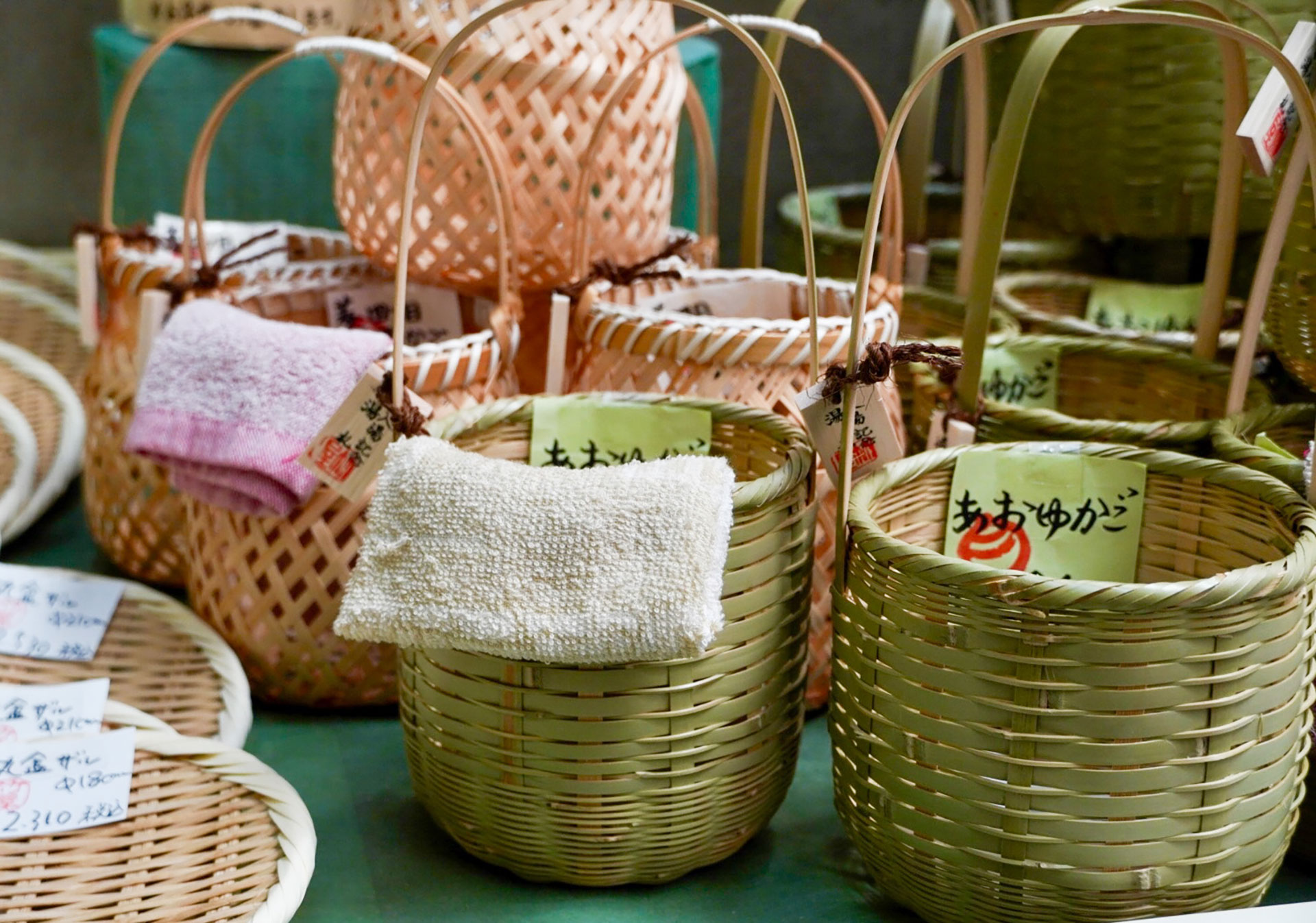
Overview
Souvenir stores are closely linked to the development of local culture with the power to further enhance it with new trends. Takeya is a store that sells bamboo crafts, situated on a shopping street along with souvenir shops at Dogo Onsen in Matsuyama City, Ehime Prefecture, Japan. Their yukago bamboo baskets have become a famous souvenir of this hot springs town. As a souvenir shop, Takeya has played an important role in fostering a culture unique at Dogo Onsen.
Dogo Onsen has a long-standing history as the oldest hot springs in Japan, and its name comes up in the Iyonokuni Fudoki* compiled during the Nara period (A.D. 710–784). Suffering no damage from bombings during WWII, the old town remained unscathed and from there developed as a tourist destination. Traditional onsen culture remains at Dogo Onsen Shopping Street, attracting tourists of all age groups.
* Written work on the regional geography of Iyonokuni (currently Ehime Prefecture, Japan)
Ms. Keiko TOKUNO opened Takeya here in 1967, as traditional crafts using bamboo have been popular over the years, becoming the leading figure in opening a souvenir shop selling such crafts. The current owner, Ms. Hikaru TOKUNO has taken over her parents’ business, selling Dogo yukago and other bamboo crafts.
Successful outcomes
- At its peak, Takeya was making approx. 100 yukago per month. Currently, while there is demand, production is limited due to the aging of craftspeople.
- Yukago are rented out to visitors at ryokans and hotels at Dogo Onsen. Visitors strolling through the town with yukago create a quaint scenery unique to Dogo Onsen.
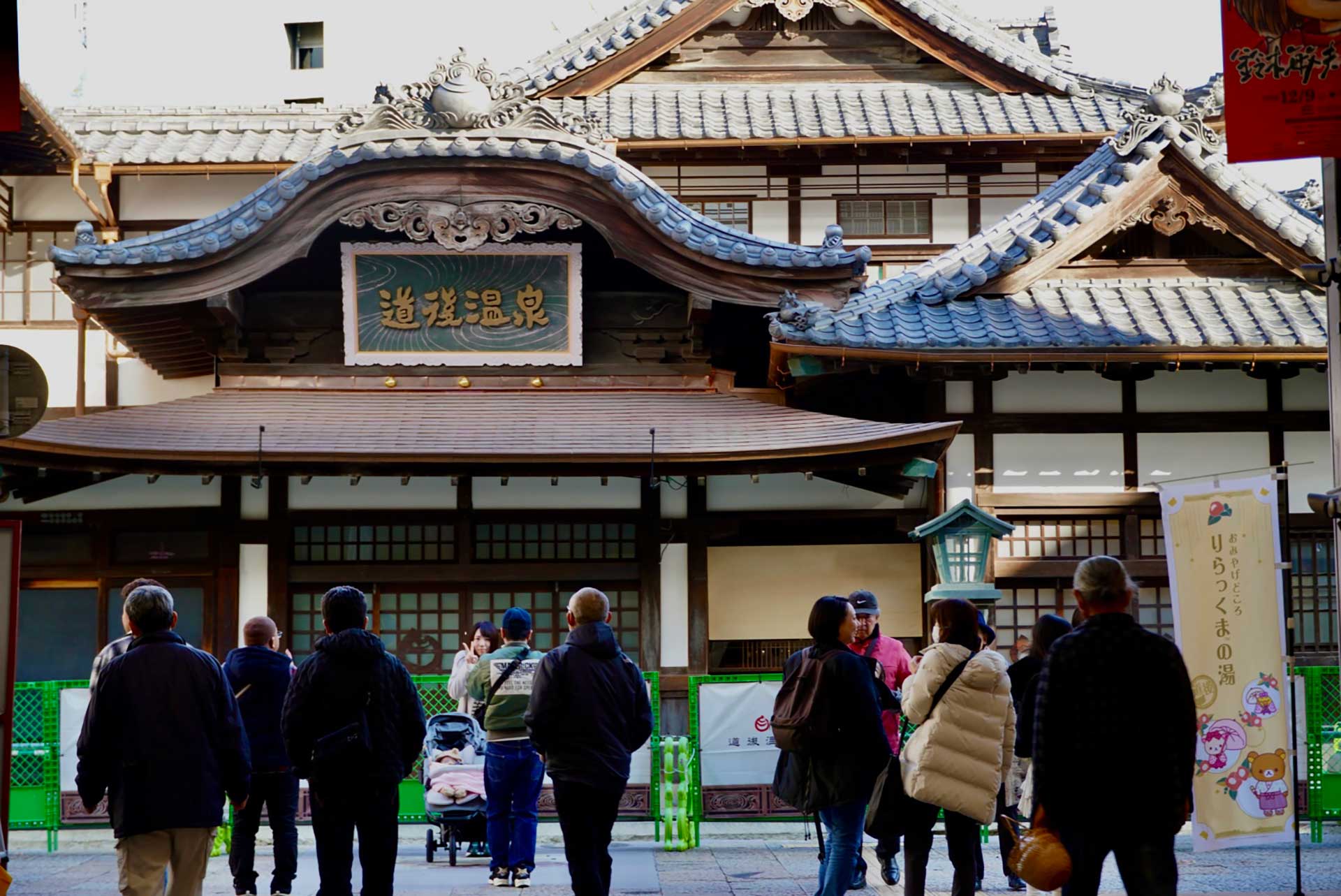
Souvenir shop's yukago culture spreading from the local area to the world
Yukago was invented by Mr. Susumu TOKUNO, father of the current owner, Hikaru.
“People used square baskets and flower baskets when they went to the hot springs. They put their towels and soap, etc., inside and took the baskets as they headed to the hot springs. My father got a craftsman to make a bamboo basket just for taking his things to the hot spring and thought that his shape was the best—and that’s how we started to sell yukago.”
At first, yukago were not even called by that name, but after trial & error and reflecting on requests from customers, the product was finally created.
“Yukago are convenient, as bamboo has anti-bacterial properties, dries quickly, and lets the water out. They are also very durable and can be used for about 10 years.”
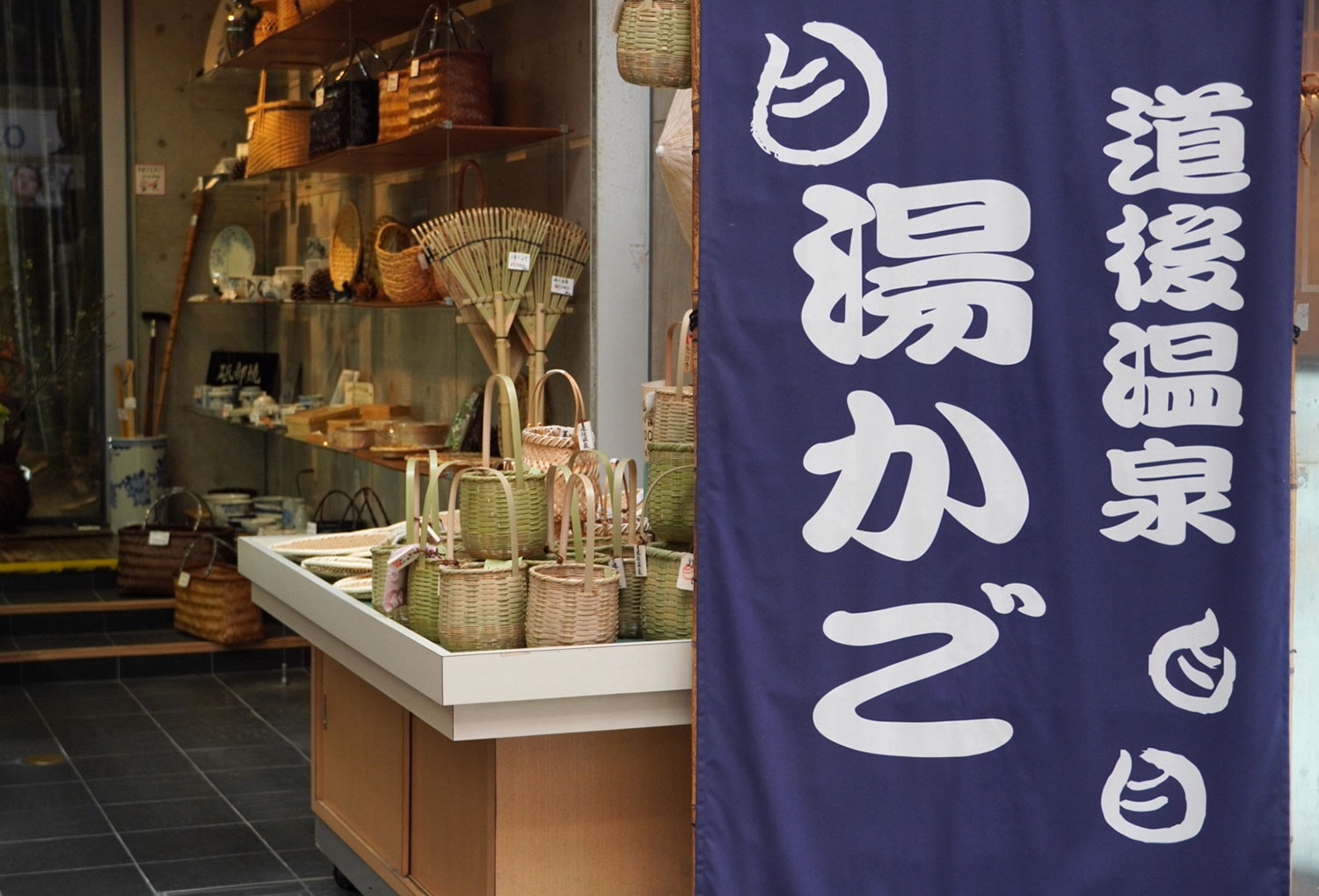
There are two types of yukago displayed at the front of the shop: shiro yukago and ao yukago. The ao yukago uses green bamboo (aotake). They are initially blue-green in color, then turn golden brown. Over the years, the color becomes more vibrant and glossy. As the appearance of the basket changes, people become attached to their baskets. There are three sizes available, sold at 5,280 yen (large), 4,400 yen (medium), and 3,960 yen (small) each. These prices include tax.
Yukago has become popular among a wide variety of onsen lovers, from visitors outside the area coming to Dogo Onsen simply to purchase a basket to a young man from the local area who always wanted to go to the onsen with a yukago from when he was little.
“There are many people who come back to buy them again when their current yukago is broken, and we even receive orders over the phone.”
Each and every basket is different, depending on how they are woven and what material is used. The funny thing is that even if the same length of the same material is used, the size of the final product can vary depending on the craftsman.
“The shiro yukago (white yukago) require steps of cutting the bamboo into narrow pieces and polishing them to make them white. They are finished off by applying a layer of oil and heating them. The preparation of each piece is necessary, and special skills are required for this process.”
Yukago culture has spread among tourists as well as in the local community as part of daily life as a culture that represents Dogo Onsen. There were many yukago craftspeople within the prefecture, but this number is decreasing due to aging population and a lack of successors. Currently, Takeya’s ao yukago are made by craftsman in Beppu, Oita Prefecture. Making shiro yukago requires advanced skill and time and is no longer made, as there are no craftspeople who make them.
In contrast, other items based on yukago invented in Dogo are being made in other areas of Japan, as well as overseas. The key for a local culture to continue may be to pass it on beyond the local area.
Yukago bamboo basket
Takeya
https://dogo-shoutengai.jp/shopping/info/d0_s041

